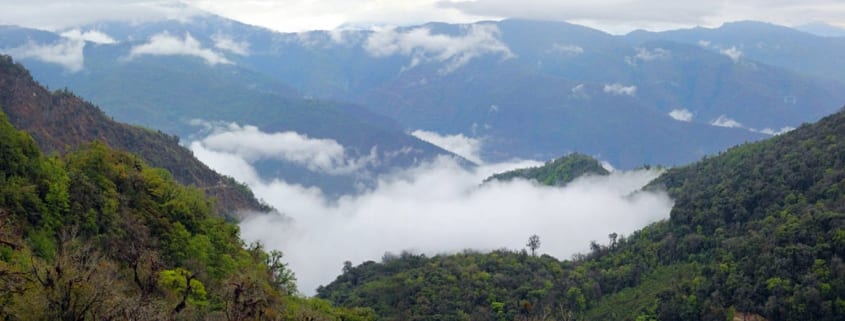Climate Change Series Part 5: Rainforest Protection Is Most Efficient Tool in Fight Against Climate Change
In our first installment of this series, we explained that the protection of rainforests and the regrowth that is able to take place because of this security is more cost-efficient than any other currently available method for pulling carbon dioxide out of the atmosphere.
“The protection of millions of acres of degraded rainforest and their subsequent natural regrowth would result in massive absorption of carbon as the trees grow,” said Rainforest Trust CEO Dr. Paul Salaman. “The reality is that stopping rainforest destruction can immediately and cost-effectively buy us a crucially needed breathing space to allow us time to transition away from the use of fossil fuels.”
As we continue to deforest our tropical habitats at unsustainable rates, there will remain a need to actively restore high-risk and heavy impacted areas so they recover to a certain level of biodiversity as quickly as possible.
Unfortunately, humans will never be able to do as good of a job recreating habitats as Earth’s natural processes. To create and sustain a rainforest for hundreds of years, the right conditions must exist, and they are almost all interdependent. For example, plants require certain temperatures and precipitation levels to thrive, and yet the local climate is very much dependent on the flora and the amount of oxygen and water vapor they release during photosynthesis (for more information, read our third and fourth installments in this series).
Plants are also highly dependent upon varying types of seed dispersal vectors, including many wildlife species that are native to forested habitats. There is also an interconnection among natural life cycles, nutrient levels in soils provided from decaying matter, plant absorption rates and thousands of species that shape their environments. These are just a few in a very long list.
Active restoration does have its place as an emergency measure, but cannot replicate this complex and delicate web. This is exactly why, when time permits, natural regeneration is the better option.
According to new research released in November 2017, “Natural regeneration surpasses active restoration in achieving tropical forest restoration success for all three biodiversity groups (plants, birds, and invertebrates) and five measures of vegetation structure (cover, density, litter, biomass, and height) tested.”
The report, “Ecological restoration success is higher for natural regeneration than for active restoration in tropical forests,” analyzed 133 studies across the tropics, finding that natural regeneration has up to a 56 percent higher restoration success rate for the above data sets when compared to active restoration.
But what’s even more effective than natural regeneration? Protecting the original forested landscape.
Rainforest Trust focuses its conservation efforts on purchasing and protecting intact tropical forests as the most sustainable and efficient way to protect our entire planet. It has safeguarded over 18 million acres in its 30-year history, with plans to more than double this to 50 million acres by 2020 through the SAVES Challenge.
When Rainforest Trust supports the protection of a threatened landscape, it does so for an average of just $2 per acre. When compared to purchasing an acre of deforested land that is likely privately owned and in agricultural use (meaning the cost is significantly greater with an average of $500 per acre), plus estimated restoration costs of $1,500 an acre, saving an acre of healthy rainforest is the better option.
“Basically, [active] restoration is a highly inefficient use of conservation money compared to securing and protecting areas recently cleared or at risk of clearance! Not only is saving existing forested areas at risk more efficient for the limited financial resources we have, but it is better for climate protection,”
Dr. Salaman said.
The amount of carbon dioxide equivalent safeguarded by preventing the deforestation and degradation of just one acre of rainforest is equal to the emissions of 40 cars in the U.S. Deforestation is currently estimated to be responsible for approximately 15 percent of the world’s total carbon emissions, about as much as the entire global transportation sector.
“While restoration can play an integral role in sequestering carbon from the atmosphere, we must first halt the carbon emissions coming from deforestation,” Dr. Salaman said.
If you would like to help in this mission to conserve rainforests and halt deforestation emissions, please visit the Conservation Action Fund, where donations directly support Rainforest Trust’s most urgent projects.




